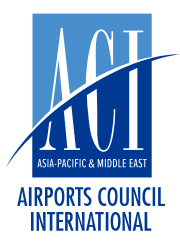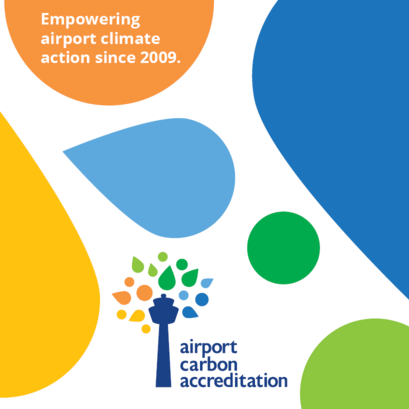
Air Connectivity Ranking: Asia-Pacific reports 13% growth; Middle East leads with 28%
- 2025-05-28
The latest study shows regional connectivity surged 14%, driven by Gulf hubs and China’s reopening
Airports Council International Asia-Pacific & Middle East (ACI APAC & MID) today announced its highly anticipated Air Connectivity Ranking 2024, revealing a remarkable 14% year-on-year increase in both Asia-Pacific and Middle East regions, driven by strong international demand, robust network recovery, and the return of major travel corridors.
The ACI Asia-Pacific & Middle East Air Connectivity Ranking is a comprehensive, passenger-centric analytical tool developed in collaboration with PwC in 2023 and refined for its third edition in 2025. The Ranking evaluates the overall level of air passenger connectivity offered by airports across the Asia-Pacific and Middle East regions. It assesses performance through three fundamental building blocks: network scale and frequency, economic weight of destinations, and connection quality and efficiency.
The Asia-Pacific region witnessed a remarkable 13% jump in overall connectivity compared to 2023, while the Middle East posted an impressive 28% increase, surpassing all post-COVID recovery forecasts. On average, connectivity across all airports rose in both Asia-Pacific and the Middle East by +14%, a strong testament to the resilience and dynamism of the aviation sector.
In Asia-Pacific, intra-regional connections are nearly back to pre-pandemic levels, trailing by just 0.2%. At the same time, intercontinental connectivity is on the rise, showing a solid 4% increase.
The Middle East, however, isn't just recovering – it's setting a new pace. Both intra-regional and inter-continent connectivity have not only bounced back but have exceeded pre-pandemic levels by a significant margin of 18% and 16%, respectively.
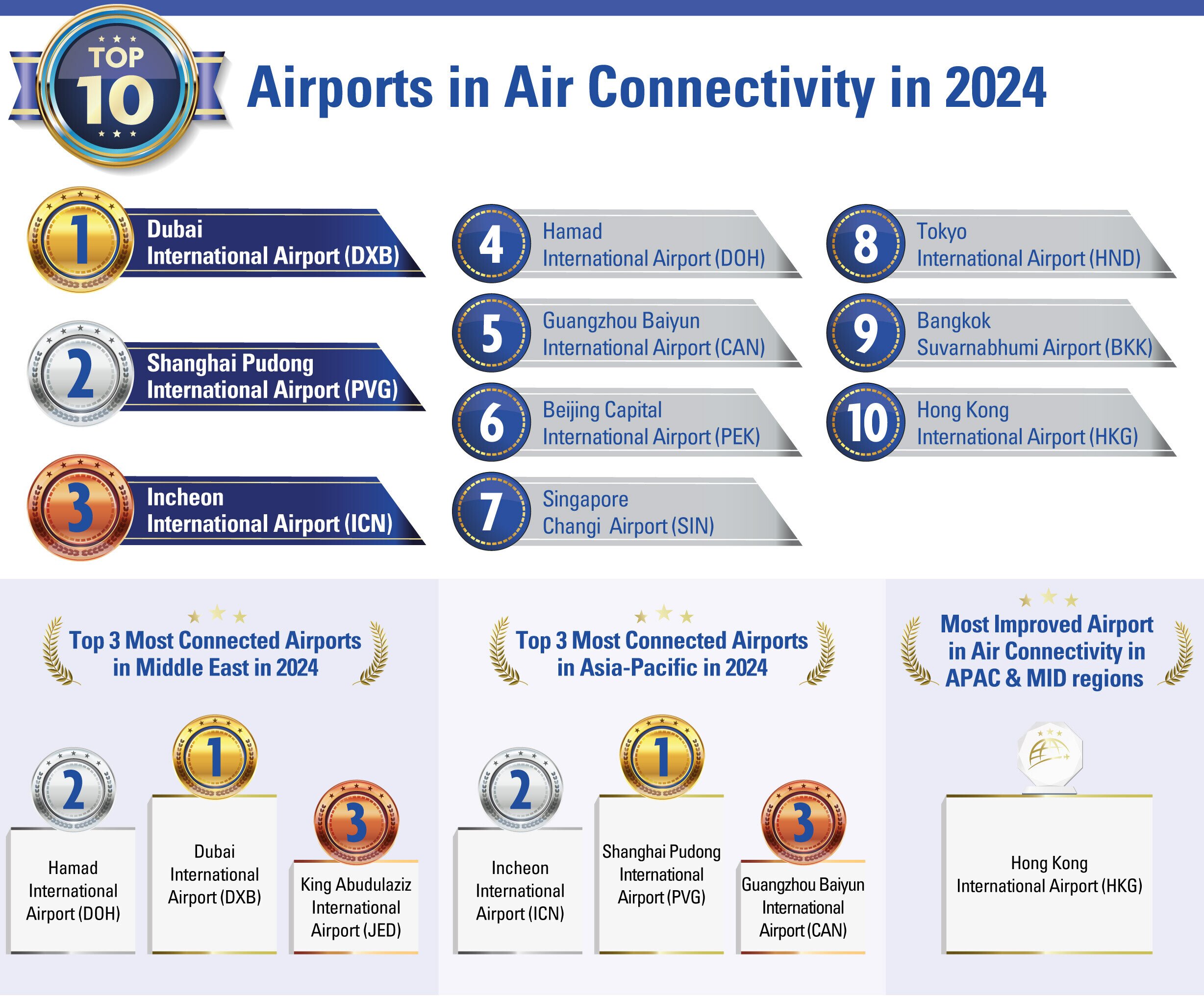
Key findings
- Airports in the region saw an average connectivity increase of +14% compared to 2023, indicating a strong industry recovery.
- Airports in Asia-Pacific and the Middle East experienced across-the-board connectivity growth in 2024, driven by China's reopening and route expansions.
- 80% of the top 300 airports have fully recovered connectivity levels, with larger hubs leading due to the resurgence of international travel.
- Domestic city pairs decreased by an average of -1% compared to 2023, suggesting a post-COVID emphasis on international expansion.
- International city pairs across all airport categories rose by an average of 17%, highlighting the strong return to cross-border travel.
- While intra-APAC passenger travel in 2024 is nearing 2019 levels, travel to Europe, the Middle East, and Africa has surpassed them, driven by Gulf hubs. Passenger traffic from Asia-Pacific to the Americas still trails 2019 levels.
- Passenger traffic in the Middle East recovered faster than APAC, showing robust 2024 vs. 2019 traffic, with passenger traffic to Africa and APAC significantly exceeding pre-pandemic levels. Traffic to the Americas remains below 2019.
- Despite increased competition, Dubai maintained its position as the leading airport in APAC and the Middle East.
- Major Asian hubs like Incheon, Singapore Changi, Shanghai Pudong, and Beijing Capital saw improved rankings and indices, reflecting strong outbound tourism and network adjustments.
Commenting on the report, Stefano Baronci, Director General of ACI Asia-Pacific and Middle East, said: “Air connectivity is not only relevant for passengers seeking more travel options and convenience; it is equally crucial for supporting global trade and economic resilience, particularly through belly hold cargo capacity.”
“While we celebrate this growth, we must remain forward-looking to ensure the momentum is sustained. Investment in airport infrastructure and technological upgrades is a prerequisite for enhancing connectivity, and airports across the region are undertaking significant investments to make this possible. In the face of growing geopolitical and trade tensions, we urge governments to prioritise air service liberalisation, streamlined visa policies, and transparent slot allocation frameworks. Lastly, we must not lose sight of the needs of small island and remote communities-- air connectivity remains their lifeline,” Mr. Baronci added.
Rise of Airport City Clusters
The 2025 edition introduces a fresh dimension: an analysis of airport city clusters. Larger urban agglomerations like Shenzhen–Hong Kong–Macau, Tokyo, Shanghai, and Beijing dominate the new City Connectivity Index, demonstrating that the presence of multiple large airports enables higher flight frequencies and diversified routing options.
Clusters such as Beijing and Shenzhen–Hong Kong-Macau have seen a substantial enhancement of connectivity through effective use of secondary airports. Seoul, Bangkok, and Taipei lead in per capita accessibility, offering exceptional connectivity relative to population size.

Hub Airports with Connectivity Leadership
The 2025 edition features a newly introduced 'Hub Connectivity Index,' which evaluates each airport based on the quality and effectiveness of its hub operations. Dubai International Airport emerged as the top hub, followed by Shanghai Pudong International Airport and Hamad International Airport.
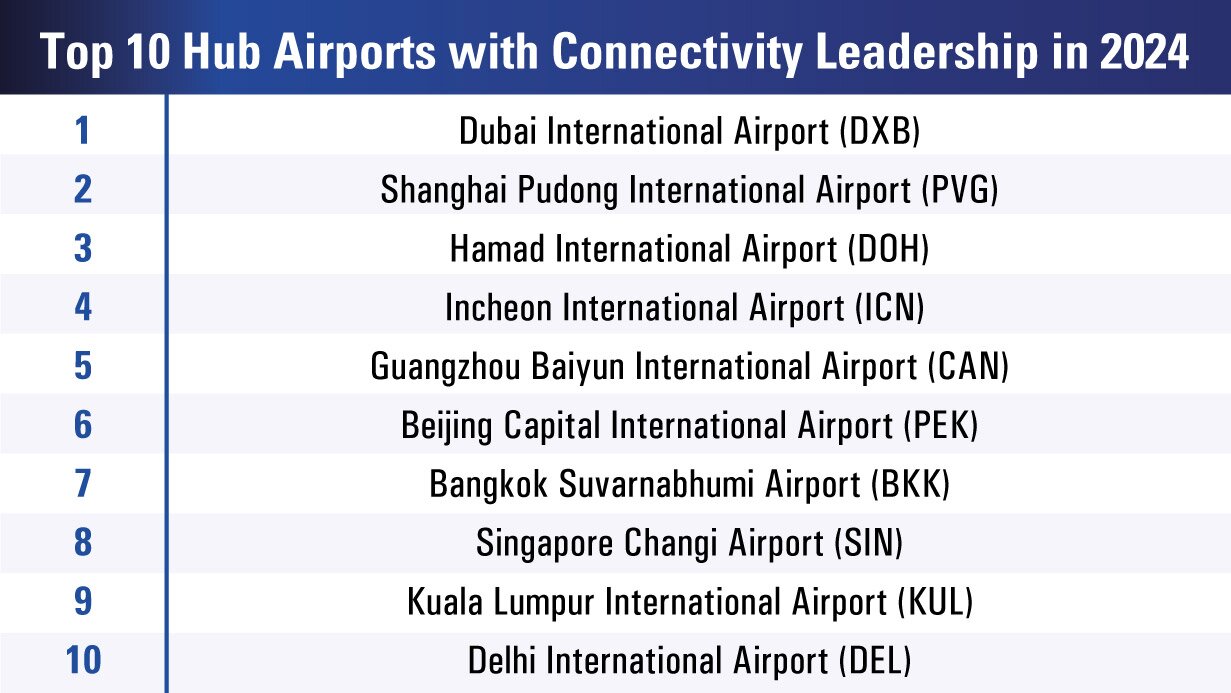
About Airports Council International Asia-Pacific & Middle East Air Connectivity Ranking
The ACI Asia-Pacific and Middle East Air Connectivity Index is a comprehensive, passenger-focused analytical tool developed in partnership with PwC in 2023 and refined for its third edition in 2025. It measures the overall level of air passenger connectivity provided by airports across the Asia-Pacific and Middle East regions, assessing performance through three fundamental building blocks: network scale and frequency, economic weight of destinations, and connection quality and efficiency.
These are operationalised through three distinct index components:
- The Direct Connectivity Index quantifies nonstop links, incorporating frequency, aircraft type, and the economic significance of destination airports.
- The Indirect Connectivity Index captures the value of indirect itineraries, accounting for airline partnerships, number of stops, and international reach.
- The Hub Connectivity Index assesses an airport’s ability to function as an international transfer point, using factors such as viable transfer windows, route deviation from direct flight paths, and the strength of onward connectivity.
Together, these components provide a multi-dimensional and empirically grounded view of how airports connect people to places, balancing volume, relevance, and the quality of the passenger journey.
- CATEGORY
- COUNTRY / AREA
- Hong Kong SAR
- AUTHOR
- ACI Asia-Pacific & Middle East
